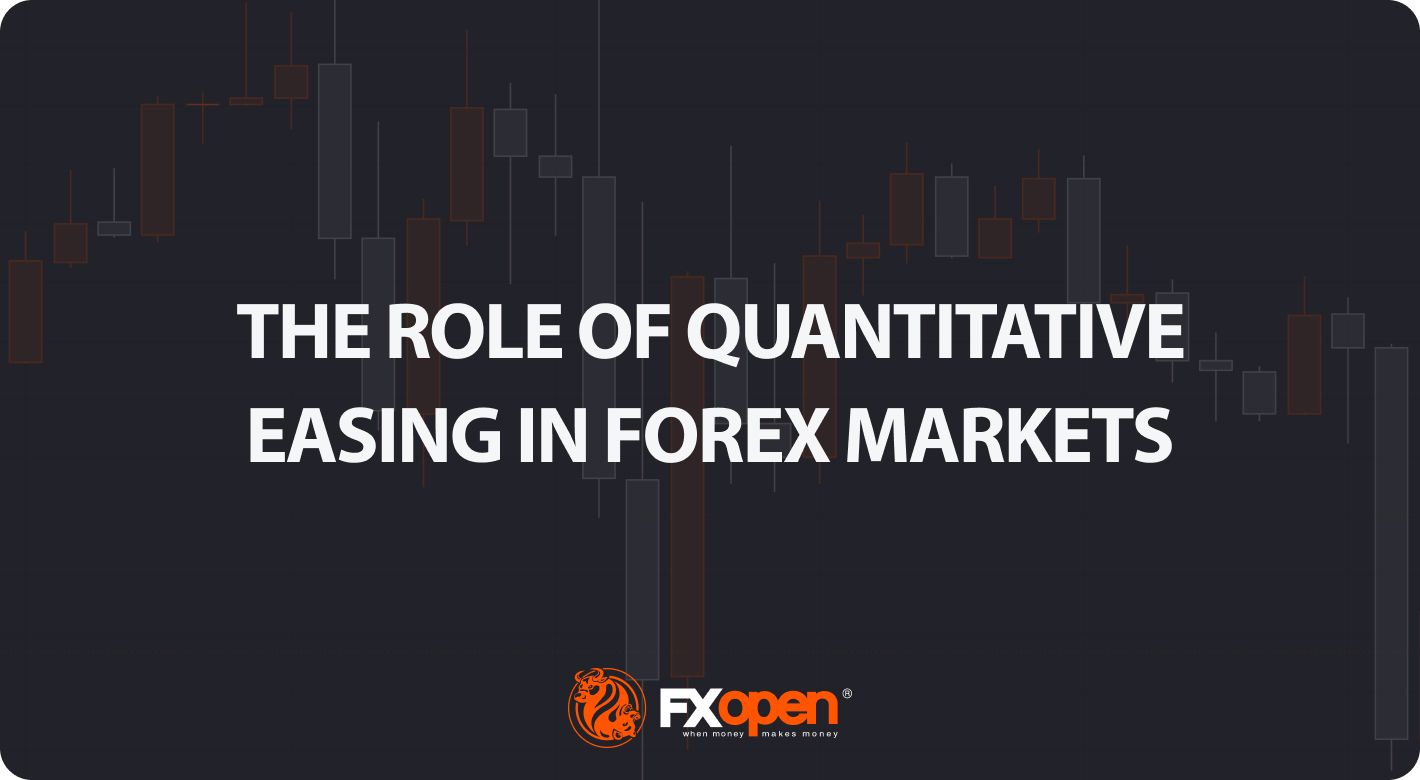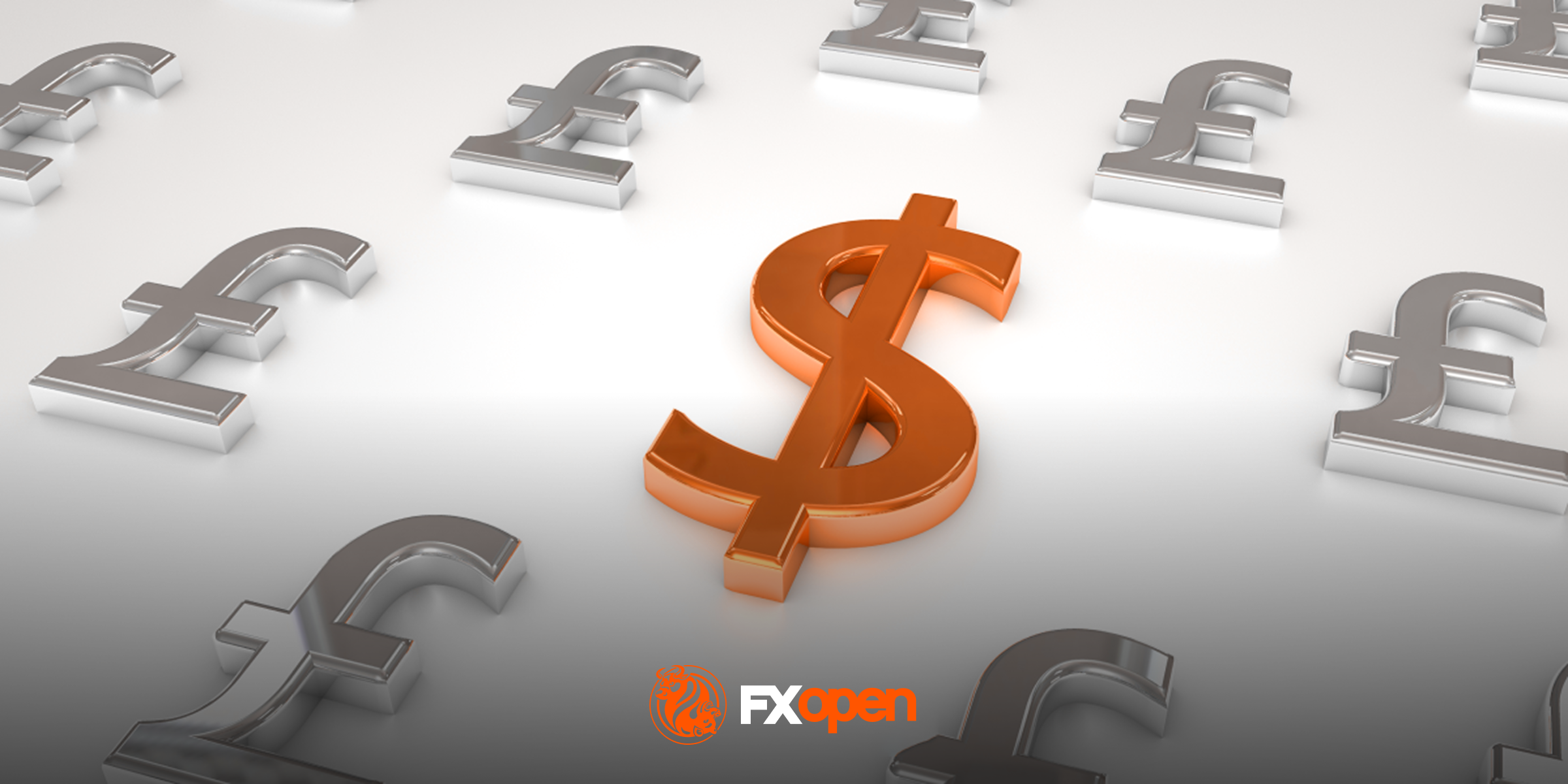FXOpen

In the complex world of finance, the term "Quantitative Easing" (QE) has become a buzzword, resonating through the corridors of central banks and financial markets alike. This FXOpen article seeks to bring some clarification to the concept, exploring what quantitative easing is, its purpose, and, specifically, its implications for the dynamic realm of forex markets.
What Is Quantitative Easing?
Traders have been meeting the abbreviation “QE” all across financial news articles and analyses in the past years. But what does QE stand for? QE is short for quantitative easing, a term that describes the central bank's approach to increasing the money supply. At its core, quantitative easing is a monetary policy tool employed by central banks to stimulate the economy when conventional methods fall short. In simpler terms, it involves the central bank injecting a substantial amount of money into the financial system.
Quantitative Easing Explained
Quantitative easing is often initiated when interest rates are already at or near zero, leaving central banks with limited traditional tools to spur economic growth. In such circumstances, instead of lowering interest rates further, central banks opt for the unconventional route of increasing the money supply. This process involves the central bank using specific instruments and market interventions to lower long-term interest rates, encourage borrowing and investment, and ultimately boost economic activity. By flooding the financial system with liquidity, central banks aim to prevent deflation, support employment, and stimulate lending.
Main Instruments for Conducting Quantitative Easing
After explaining the meaning of quantitative easing, let’s discuss the instruments that central banks employ to achieve specific objectives within a broader framework.
- Open Market Operations (OMO): Central banks conduct open market operations through the large-scale buying and selling of securities, such as government bonds, treasury bills, mortgage-backed securities, and, in some cases, even corporate bonds in the open market. These purchases inject liquidity into the financial system, lowering long-term interest rates.
- Discount Rate Policies: By lowering the discount rate, central banks encourage commercial banks to borrow more, fostering increased lending and economic activity. In extreme cases, central banks may even introduce negative interest rates, charging commercial banks for holding excess reserves.
- Forward Guidance: While not a direct instrument in the traditional sense, forward guidance is a crucial communication tool used by central banks. Through statements and guidance, central banks signal their intentions regarding future monetary policy. This may help shape market expectations and influence interest rates and investment decisions.
- Currency Swaps: In certain circumstances, central banks engage in currency swaps with other central banks. These transactions involve the exchange of one currency for another, providing foreign currency liquidity and stabilising currency markets.
- Quantitative and Qualitative Monetary Easing (QQE): Some central banks implement QQE, a policy that combines quantitative easing with other unconventional measures. For example, in 2013, the Bank of Japan introduced QQE, which includes not only asset purchases but also a commitment to achieving a specific inflation target.
Risks and Results of Central Bank QE Interventions
The risks and the actual effectiveness of quantitative easing in stimulating economic growth and achieving its intended objectives of being a balancing act for markets is a topic of ongoing debate among economists, policymakers, and traders.
Quantitative Easing and Inflation
One of the significant concerns associated with quantitative easing is its potential impact on inflation. As the central bank injects money into the economy, there is a risk that this influx of liquidity could lead to rising prices. However, the relationship between quantitative easing and inflation is complex and can be influenced by various factors. In theory, an increase in the money supply could lead to inflationary pressures. Still, in practice, the effectiveness of quantitative easing in generating inflation depends on the overall economic conditions, the velocity of money circulation, and the willingness of banks to lend.
Does QE Actually Work?
- The Federal Reserve implemented QE measures in the United States in the aftermath of the 2008 financial crisis, leading to a substantial expansion of the monetary base. The US economy experienced a recovery, marked by improved employment rates and economic growth.
- The Eurozone's experience with QE has been more nuanced. The European Central Bank (ECB) announced its quantitative easing programme in January 2015 to address deflationary pressures and lacklustre growth, but the results have been mixed, with some countries benefiting more than others.
- Japan's prolonged use of QE since December 2012, known as Abenomics, aimed to combat deflation and stimulate economic activity. While there have been positive outcomes, such as increased stock prices, the impact on inflation and sustained economic growth remains a challenge.
Overall, the effectiveness of QE seems to depend on various factors, including the specific economic conditions, the implementation strategy, and the ability of central banks to manage expectations and communicate effectively.
Quantitative Easing in Forex Markets
Now, let's go into the specific implications that the quantitative easing definition holds for the economics of forex markets. The interconnectedness of global financial markets means that actions taken by one central bank can have far-reaching effects on currency values. When a central bank engages in quantitative easing, it often leads to a depreciation of the domestic currency.
As the central bank purchases assets and increases the money supply, interest rates typically decline. Lower interest rates make the domestic currency less attractive to investors seeking higher returns. Consequently, investors may shift their capital to currencies with higher interest rates, causing the domestic currency to weaken relative to others.
If you are interested in trading currencies with different interest rates, you can visit FXOpen and try out strategies using the free TickTrader trading platform.
Takeaway
Quantitative easing is a powerful yet complex monetary policy tool that central banks employ to navigate challenging economic landscapes. Its impact on forex markets is a testament to the interconnected nature of the global financial system. As central banks continue to grapple with economic challenges, understanding the role of quantitative easing becomes increasingly crucial for all market players. Ready to test some advanced forex trading strategies? You can open an FXOpen account and try out new trading perspectives.
This article represents the opinion of the Companies operating under the FXOpen brand only. It is not to be construed as an offer, solicitation, or recommendation with respect to products and services provided by the Companies operating under the FXOpen brand, nor is it to be considered financial advice.
Stay ahead of the market!
Subscribe now to our mailing list and receive the latest market news and insights delivered directly to your inbox.








